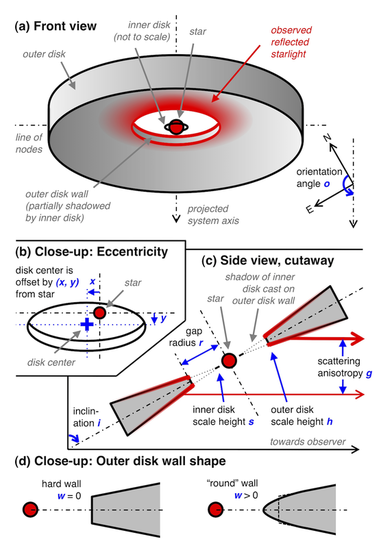
One of the ways of suppressing starlight to detect exo-planets and circumstellar material is Angular Differential Imaging or ADI. ADI makes use of the field rotation on a ground-based telescope to subtract out the central star, revealing fainter sources close to the star, such as planets. In the case of extended emission from a disk, some of the disk flux is also distracted, and the resulting observed image becomes distorted.
To derive the true underlying geometry of the transitional disk LkCa 15 from ADI observations, we have performed a full forward modeling approach using the 2D radiative transfer code MCMax. Based on constraints from the spectral energy distribution, we explore a 9-dimensional parameter space for the disk geometry, and simulate what the observed ADI image would look like for each set of parameters to identify the best-fit solution.
We find evidence for an eccentric gap, with a rounded-off outer edge, both being consistent with hydrodnamical simulations of a giant planet shaping the disk and explaining the transitional disk morphology.
link: Thalmann, Mulders et al. 2014 (arXiv)

 RSS Feed
RSS Feed
